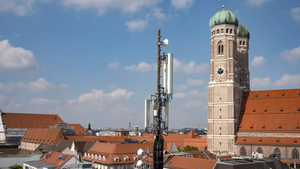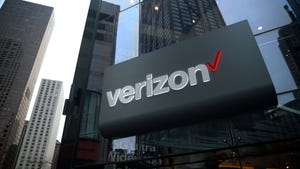
AT&T Inc. (NYSE: T) is expanding its WiFi hotzone pilot project from Times Square to Charlotte, N.C., and Chicago, in hopes of alleviating congestion on its 3G network. It’s a good start, says one analyst, but it’s only a fraction of what the beleaguered carrier should be doing with WiFi. (See AT&T Adds WiFi Hotzones.)
“Just putting [WiFi] in downtown areas is half-stepping,” says broadband consultant Craig Settles. “It solves a purpose, but only half-way.”
The purpose it solves for AT&T is clear, given its well reported network troubles. AT&T has been turning to WiFi to help relieve congestion for awhile now, and its customers have responded favorably. AT&T public WiFi hotspots attracted more than 68.1 million connections in the second quarter, up from only 15 million a year ago.
Settles says this isn’t enough.
If AT&T were to partner with the communities instead of just plop WiFi down, these hotzones could become much wider networks that would benefit AT&T, the city, and users all at once. Instead, they really only benefit its data-heavy iPhone and iPad customers.
“If you are going to do it, don’t do it in isolation,” Settles says. He concedes that Charlotte is a good choice, because it’s in a heavily rural state, but he believes that if AT&T opens the hotzones to rural areas that lack broadband access, it will reach new customers -- not just upgraders as most of its iPhone adds were. (See Apple Outdoes Itself with iPhone 4.)
If AT&T doesn’t push the limits of its WiFi service, however, it will be nothing more than a huge McDonald's, Settles says. And no one wants grease all over her keypads.
AT&T isn’t making any promises for additional hotzones -- it’s billing the program as a pilot to “gather more information and customer feedback.” But the program makes a lot of sense for the carrier even if the move isn’t altruistic.
It’s no secret that traffic on AT&T's 3G network has grown by 5,000 percent in the last three years, and could go higher with the onslaught of Apple Inc. (Nasdaq: AAPL) iPhone and iPads. AT&T CFO Rick Lindner told investors on the company’s second-quarter earnings call that between 400,000 and 500,000 iPad owners signed up for 3G data plans since the 3G/WiFi version became available on April 30. Of these, more than 75 percent chose the largest monthly data plan (2 gigabytes).
Because of this, AT&T has also been working to improve its 3G network with additional cell towers in New York and San Francisco, but it's faced regulatory roadblocks on the West Coast. San Fran is currently about 90 days behind the schedule in NYC, Lindner said on the call. (See AT&T's Q2 iBoost.)
“As our chief technology officer said in remarks a few days ago, we are moving heaven and earth to execute our network plan,” Linder said. “We’re adding additional third and fourth carriers, adding fiber backhaul and Ethernet to cell sites. We’re deploying in-building and venue solutions where appropriate, and we are doing more with WiFi, including piloting WiFi hotzones like the one we’ve turned up and have running in Times Square.”
AT&T is also a member of the Wireless Broadband Alliance (WBA), a consortium that includes BT Group plc (NYSE: BT; London: BTA), Comcast Corp. (Nasdaq: CMCSA, CMCSK), Deutsche Telekom AG (NYSE: DT), and even WiFi-holdout Verizon Wireless . The group, which combined spans 100,000 WiFi hotspots, is working to drive wireless broadband deployment and essentially to create one enormous WiFi hotspot by interoperating among carrier networks. (See AT&T, Comcast, VZ Join WBA.)
Dave Fraser, CEO of WiFi vendor and WBA member Devicescape Software Inc. , says that even when Long Term Evolution (LTE) networks come online, WiFi will remain integral to AT&T and other carriers' plans, as they will never be free of data overload woes.
“The basic resource is licensed spectrum, so when you have a certain amount of bandwidth to be carried, enough traffic will saturate that,” Fraser says. “4G is a good step forward, but there’s no way there’s enough bandwidth to handle all the applications coming. We haven’t even scratched the surface.”
— Sarah Reedy, Senior Reporter, Light Reading Mobile
About the Author(s)
You May Also Like












